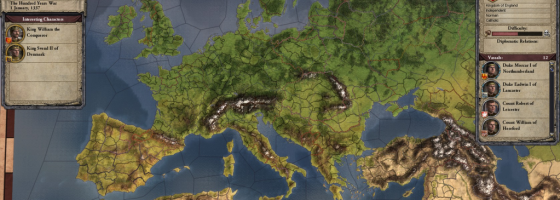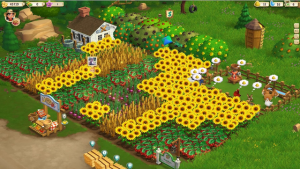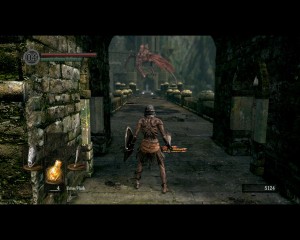Recently, Kerbal Space Program had its latest update released and I decided to hop in and try the game again. After about ten minutes of not knowing what to do, I hopped back out. Kerbal Space Program in its current form is an in-depth game with very little accessibility and is another example of a popular debate when it comes to game design.
Profit vs. Play:
If you talk to most old school gamers, the ones who have been around since the late 80s – early 90s, they will probably mention that games were a lot more complex back then.
There are two main reasons why, one was that technology was still very early and designers had to make due with what was available. Second was that most game designers at the time were hobbyist and programmers wanting to make games for themselves and likeminded people.
They weren’t interested in making a commercial product but something that they could enjoy and maybe sell a few copies here and there. Both of these reasons gave us a variety of niche, but incredibly deep games. X-Com, Star Control, Sim City and the list goes on.
While these games were certainly great titles, they were limited in their appeal by the technology of the time and their designs. As video games became more popular in the 90s and exploded into the mainstream in the 00s, publishers and developers wanted to capture on the increased consumer base.
The last decade was spent making video games accessible. This was the rise of the social and mobile markets, controller standardization and Nintendo introducing motion controls to the masses.
Video games were now selling in upwards of millions of dollars for the big name games, but many gamers noticed how AAA games were starting to blend together, such as the FPS genre.
As we’ve talked about on several casts, AAA developers are stuck between a rock and a hard place. It’s better for them to make a simple game that sells a lot vs. something that is more creative and unique but only appeals to a niche market.
A niche success for a game that cost millions of dollars to make is still considered a failure with such a huge cost of development. With so many developers stuck like this, over the last few years we’ve seen many designers go the Indie route to make the games they want without the pressures of having to sell millions of copies.
However, being able to make a niche game has its own set of challenges.
It feels like some designers get stuck in an echo chamber with their fans and denounce even the simplest changes to make their games more appealing at a risk of upsetting their hardcore fans; in essence trading one taskmaster for another.
There is a fine line between simplifying a game to make it easier to understand and as hardcore gamers put it, “dumbing it down for the masses.” And while there is a push and pull between complexity and accessibility, there is one tip that can make things easier.
Working Your Way Backwards:
If we were to examine the extreme ends of accessibility and depth in game design, there are two games that we can use as examples.
The ultimate example of an accessible game would be Farmville: Simple, anyone can play and no depth. For the other side we have Dwarf Fortress: Incredibly deep, replayable but some say could require a college level course to teach someone how to play.
For me, I don’t like games on either end of the spectrum, too easy and I get bored, too much demand to learn and it’s really not worth my time. I have a simple rule that I use, if a game requires outside support (anything developed by fans and not by the developer) to figure out the game, then the designer has failed in teaching someone how to play or making it accessible to figure out on their own.
If you look at the war game or grand strategy genre, they very much aim for one specific group of gamers and that’s it. Leaving anyone who would like to try them with either spending hours going over the manual, watching tutorial videos and let’s plays, or play a more simple interpretation of the genre.
The challenge that designers face is that when you spend day in and day out building a game from scratch, you know how everything works already and don’t need anything to figure things out.
This in turn can make it difficult to write an adequate manual or UI for someone not familiar.
While it may seem prudent then to build tutorials or work on making your game accessible during development, that doesn’t work either. If your game goes through multiple revisions and fundamental changes during development, then that can render any tutorials useless.
On my cast with Chris Hecker, he made a really good point about game accessibility and that was to save it for the end. With Spyparty, Chris knows right now that the game is inaccessible for a lot of people due to the complex design, but that’s okay as the game isn’t done yet.
Chris talked about his strategy being to make the best, most complex version of Spyparty that he can, then turning his attention to making it accessible. If you start out with making your game accessible before it’s done, either you’ll end up with a very simple product, or you’ll just waste time and money on work that will eventually have to be redone.
He also mentioned a talk by Rob Pardo from Blizzard that he gave on Starcraft’s development, and how they didn’t start with making Starcraft accessible. But instead on making the most complex game possible and then focusing on making something that could be considered accessible.
When making a video game, it’s better to start out making something deep then peeling away the elements that don’t work or are complex for the sake of complexity vs. trying to make something very simple and then adding depth.
As with the former, you already have a stable foundation of what your game is. But trying to make a simple game more complex, you’re going to have a harder time creating a design that works and may just end up having to rebuild the game if you can’t get everything to work.
It’s interesting how with kickstarter and early access that gamers are seeing games in their rawest version. And that just because a game turns out being simple to learn but hard to master, doesn’t mean that it began that way. Making a deep game is easy, making a game that is deep and understandable is another matter entirely.




